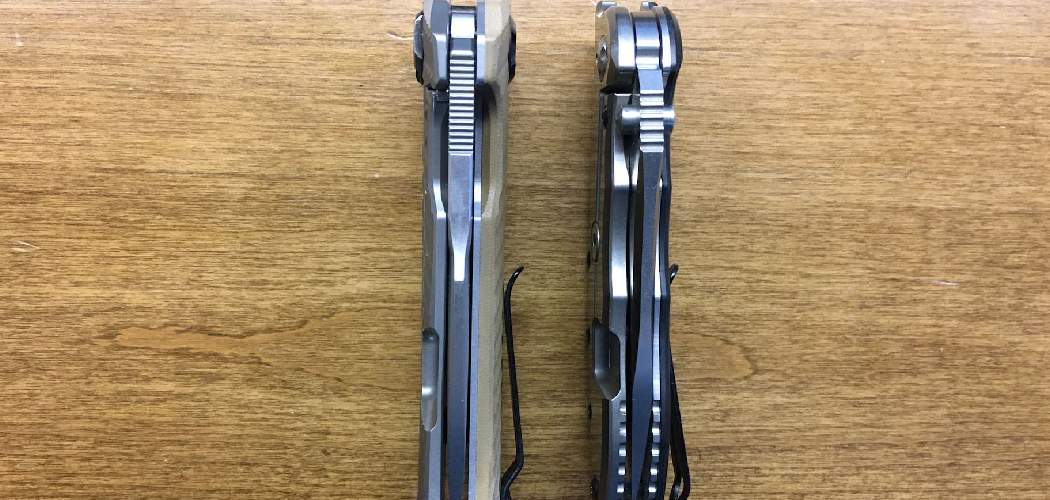A line lock is a useful device designed to hold tension in a rope or cord without the need for complex knots. Commonly used in camping, hiking, or outdoor activities, it provides a simple and efficient way to secure lines for tents, tarps, or other gear.

Understanding how to properly use a line lock ensures a secure setup and can save time when adjusting or tightening your lines. This guide will walk you through the basics of how to use a line lock effectively.
What is a Line Lock and How Does It Work?
A line lock is a small, typically lightweight device made from durable materials such as plastic, metal, or aluminum. Its primary purpose is to manage and adjust tension in a rope or cord without requiring the user to tie complex knots. The device works by threading the cord through designated slots or holes in the line lock, which apply friction and hold the rope securely in place.
By pulling on the free end of the cord, you can easily adjust the tension, and the line lock will keep it steady once released. This simple mechanism makes line locks a practical and reliable tool for securing shelters, tents, tarps, or other gear setups in a matter of seconds.
Manual vs. Electronic Line Locks
When it comes to line locks, both manual and electronic versions offer unique benefits, catering to different needs and preferences.
Manual line locks are simple, lightweight, and easy to use. They rely solely on mechanical friction to hold tension, making them highly reliable and ideal for outdoor activities like camping and backpacking.
These traditional line locks are often preferred for their affordability, durability, and lack of dependency on external power sources, ensuring consistent performance in remote or rugged environments.
On the other hand, electronic line locks introduce advanced technology for greater precision and ease of use. These devices often feature motorized mechanisms and digital controls for adjusting tension with minimal effort.
While they offer exceptional accuracy and convenience, electronic line locks may be bulkier, more expensive, and reliant on batteries or charging, which could limit their utility in some outdoor scenarios.
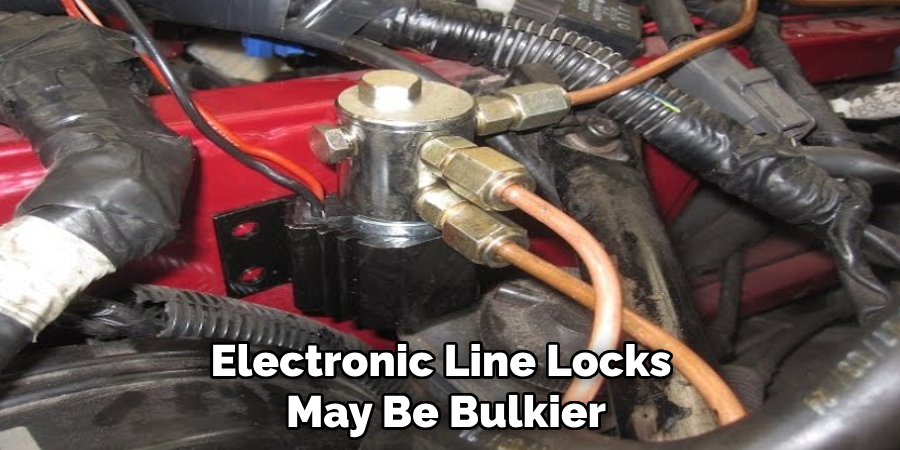
Ultimately, the choice between manual and electronic line locks depends on the specific requirements of your activity. For lightweight, low-maintenance needs, manual line locks are an excellent choice. However, for applications demanding high precision or repetitive adjustments, electronic options may provide a significant advantage.
10 Methods How to Use a Line Lock
1. Understanding the Line Lock Mechanism
Before using a line lock, it’s crucial to understand how it functions. A line lock is an electrically controlled valve installed in the front brake line. When activated, it locks hydraulic pressure in the front brake lines, holding the front brakes on even when the brake pedal is released.
This allows the rear wheels to spin freely while the front wheels stay locked, ideal for burnouts or precise staging at the drag strip. Familiarizing yourself with how the system operates will make the next steps more intuitive and ensure you use the device correctly.
2. Inspecting Your Line Lock System
Proper inspection before use is key to ensuring your line lock works as intended. Start by checking the installation for any leaks or loose connections. The wiring should be intact, and the activation switch should function smoothly. Test the system by pressing the brake pedal firmly, engaging the line lock, and slowly releasing the pedal.
If the front brakes remain engaged without leaking, your line lock is in good working order. Routine checks are essential to avoid failure during critical moments, especially when performing burnouts or staging at a race.
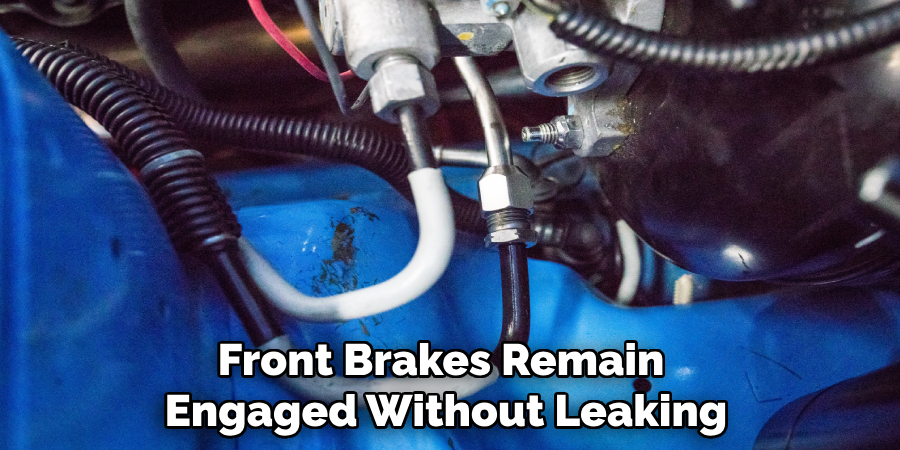
3. Activating the Line Lock for a Burnout
One of the primary uses of a line lock is to perform a controlled burnout. Begin by pressing the brake pedal firmly to engage both front and rear brakes. Next, press the line lock activation button or switch, which will hold pressure in the front brake lines. Once activated, release the brake pedal while keeping the line lock engaged.
With the front wheels locked, you can now accelerate, causing the rear wheels to spin freely. To end the burnout, simply release the line lock switch, and the front brakes will disengage, allowing the car to move forward.
4. Using Line Lock for Staging
Staging at the starting line during a race requires precision and control. To use the line lock for staging, roll your vehicle into the staging area while applying the brakes. Once positioned, engage the line lock to keep the front brakes locked while you prepare for launch.
This prevents the car from rolling backward or creeping forward while you focus on the countdown or signal. When it’s time to launch, simply release the line lock, and the car will take off without any delay. Mastering this technique is essential for consistent and efficient starts in drag racing.
5. Performing a Tire Warm-Up
Warming up your tires before a race improves traction and performance. To do this using a line lock, apply the brakes firmly, activate the line lock, and then gradually increase throttle to spin the rear tires.
The heat generated during the burnout will make the tires stickier, providing better grip during the race. Keep the line lock engaged until the tires reach the desired temperature, then release it to move forward. Practicing this method can significantly improve your car’s performance on the track.
6. Safe Deactivation After Use
Once the line lock has served its purpose—whether for a burnout, staging, or warming tires—it’s crucial to disengage it properly. Releasing the line lock too abruptly can cause the vehicle to lunge forward, which might be dangerous if you’re near the starting line or other cars.
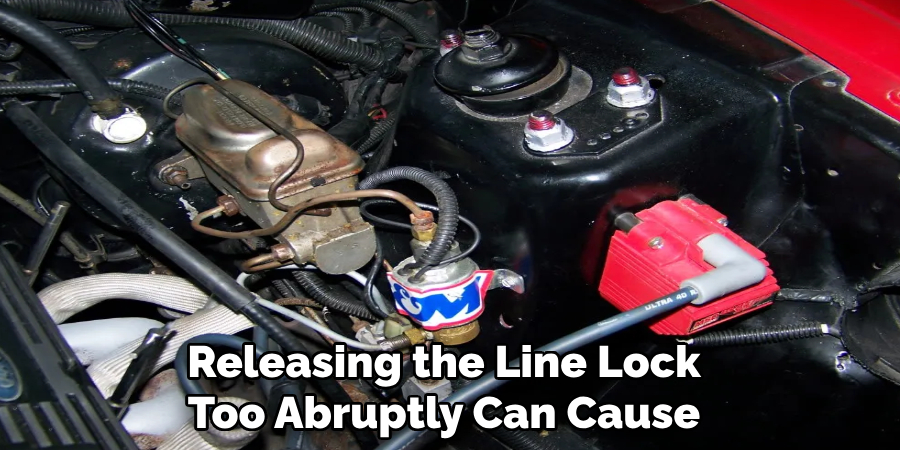
Gently let go of the activation button or switch, and ensure that the brakes release smoothly. Double-check that both front and rear brakes function properly before proceeding. This careful deactivation practice reduces risks and ensures your vehicle remains in control.
7. Practice Makes Perfect
Using a line lock effectively requires practice. Start by familiarizing yourself with how the system engages and releases. Try practicing in a controlled environment, away from traffic and obstacles. Gradually build confidence by practicing small burnouts and staging maneuvers.
Repetition helps develop muscle memory, allowing you to operate the line lock smoothly under pressure. Consistent practice not only makes you more proficient but also enhances safety when using the line lock during high-stress situations, such as a drag race.
8. Integrating with Launch Control
For vehicles equipped with launch control, combining it with the line lock can optimize your start. While staging, activate the line lock to secure the front wheels, then engage launch control for consistent power delivery. As the light turns green or the race starts, release the line lock and let the launch control manage the torque.
This combined method reduces wheel spin and enhances straight-line acceleration. Understanding how to synchronize both systems will give you a competitive edge and reduce the risk of losing control.
9. Troubleshooting Common Issues
Sometimes, the line lock may not engage or release correctly. If this happens, first check the fuse and wiring connections. A faulty switch or valve can also cause malfunction, so inspect them thoroughly. If the line lock remains engaged, try pressing the brake pedal again while manipulating the switch to relieve hydraulic pressure.
In some cases, air in the brake lines can affect the line lock’s performance, so bleeding the brakes might be necessary. Knowing how to troubleshoot on the spot can save you from delays or mishaps during an event.
10. Maintenance for Optimal Performance
Regular maintenance ensures your line lock system works reliably when needed. Clean the solenoid and check for corrosion or dirt buildup. Inspect the wiring and electrical connections to ensure they remain secure and functional. Lubricate the moving parts to prevent stiffness or seizing.
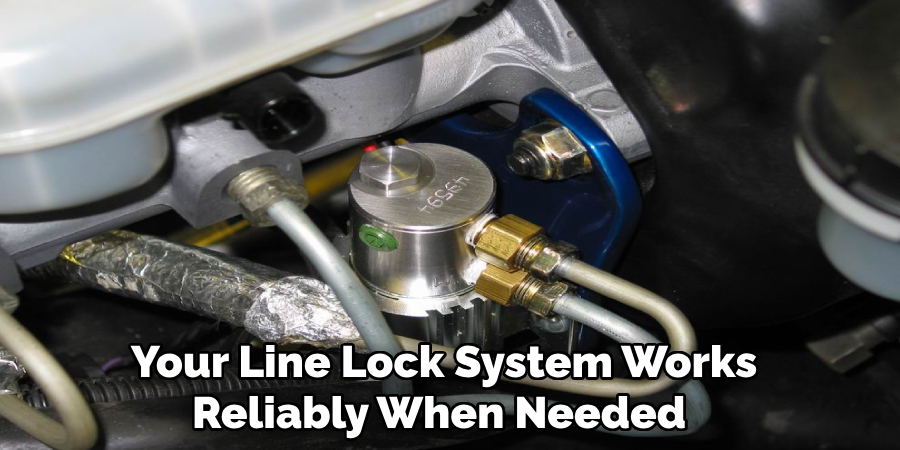
Additionally, bleed the brake system periodically to remove any trapped air that might compromise line lock efficiency. Maintaining your line lock system not only prolongs its lifespan but also guarantees consistent performance during critical moments on the track.
Maintenance and Upkeep
Regular maintenance of your line lock system is essential to ensure optimal performance and safety. Start by developing a routine inspection schedule to assess the condition of key components. Check the hydraulic lines for leaks or cracks, as even minor damage can lead to performance issues.
Ensure the solenoid is functioning correctly by testing its engagement and release under different conditions. Clean and inspect the connections for signs of wear or corrosion, addressing any issues immediately to prevent long-term damage.
Always use high-quality brake fluid and replace it as recommended by the manufacturer, as old or contaminated fluid can impact the system’s effectiveness. By staying diligent with maintenance, you not only enhance the reliability of your line lock system but also maintain its critical role in delivering precise and consistent braking performance.
Conclusion
A line lock is an invaluable tool for racers and performance enthusiasts. From performing burnouts to precise staging at the drag strip, mastering the use of a line lock can significantly enhance your control and performance. By understanding how the system works, performing routine maintenance, and practicing regularly, you ensure the device’s reliability and effectiveness.
Thanks for reading our blog post on how to use a line lock! We hope you found it helpful and informative.

